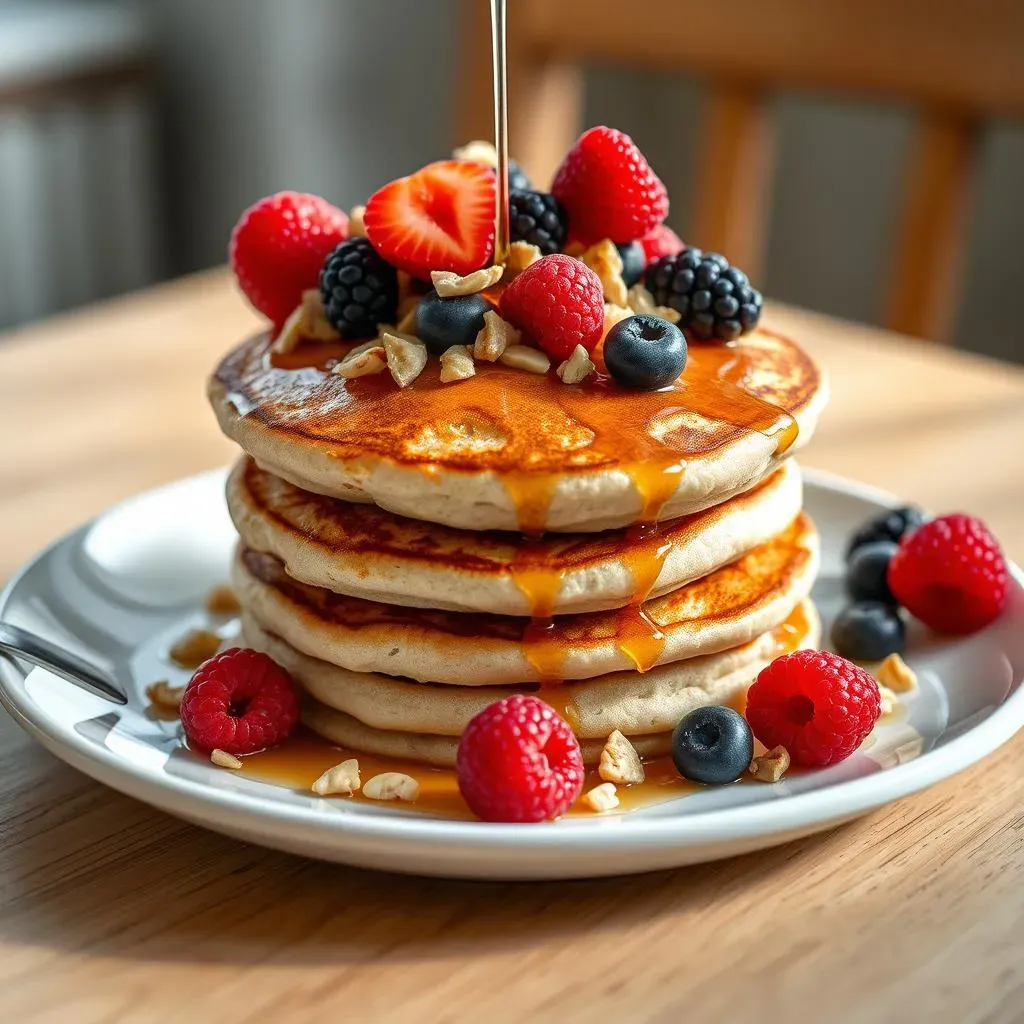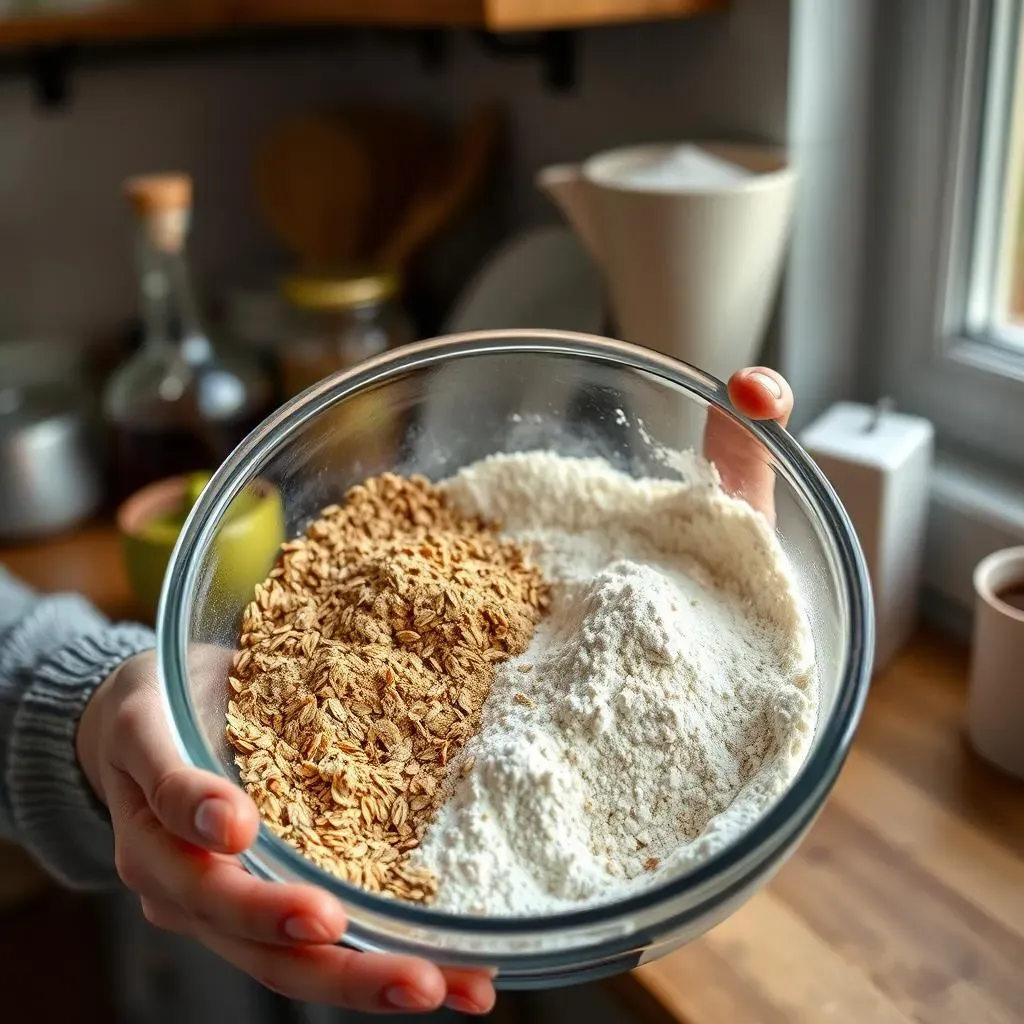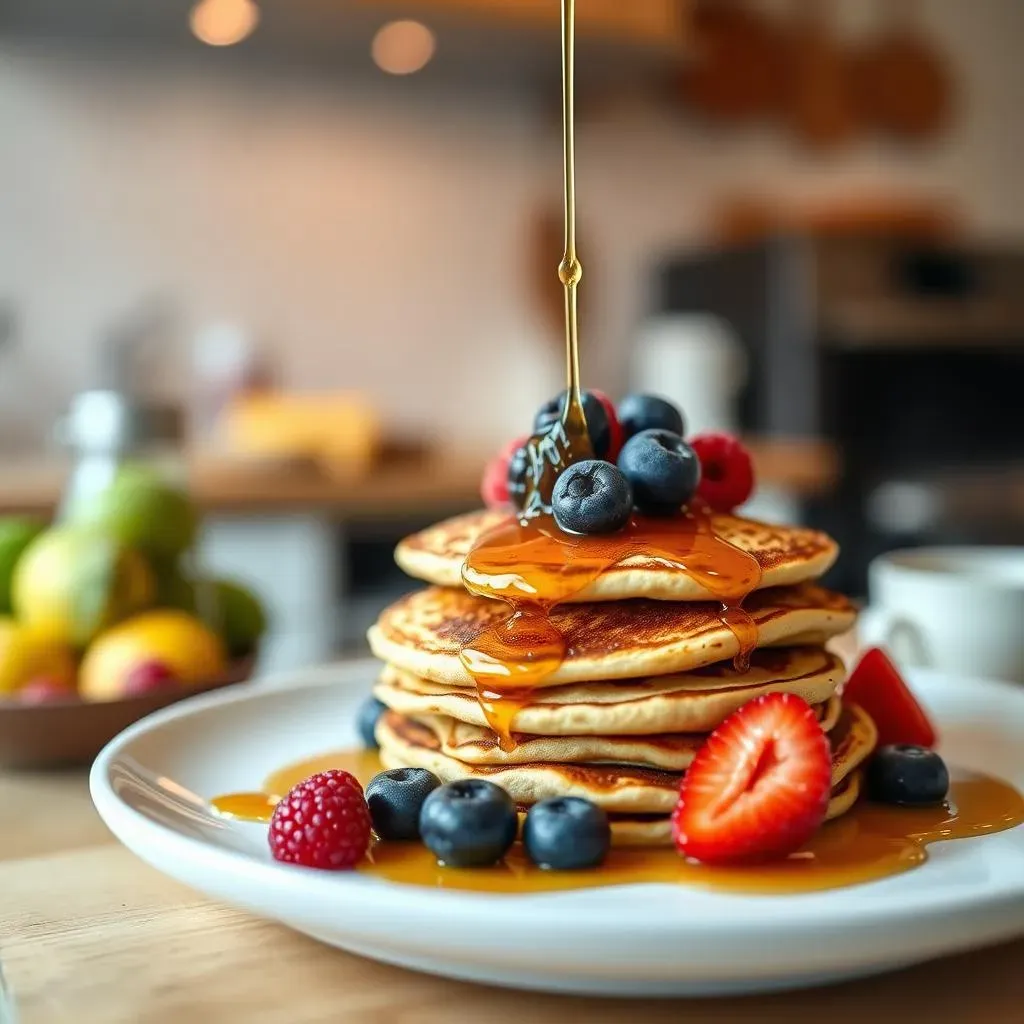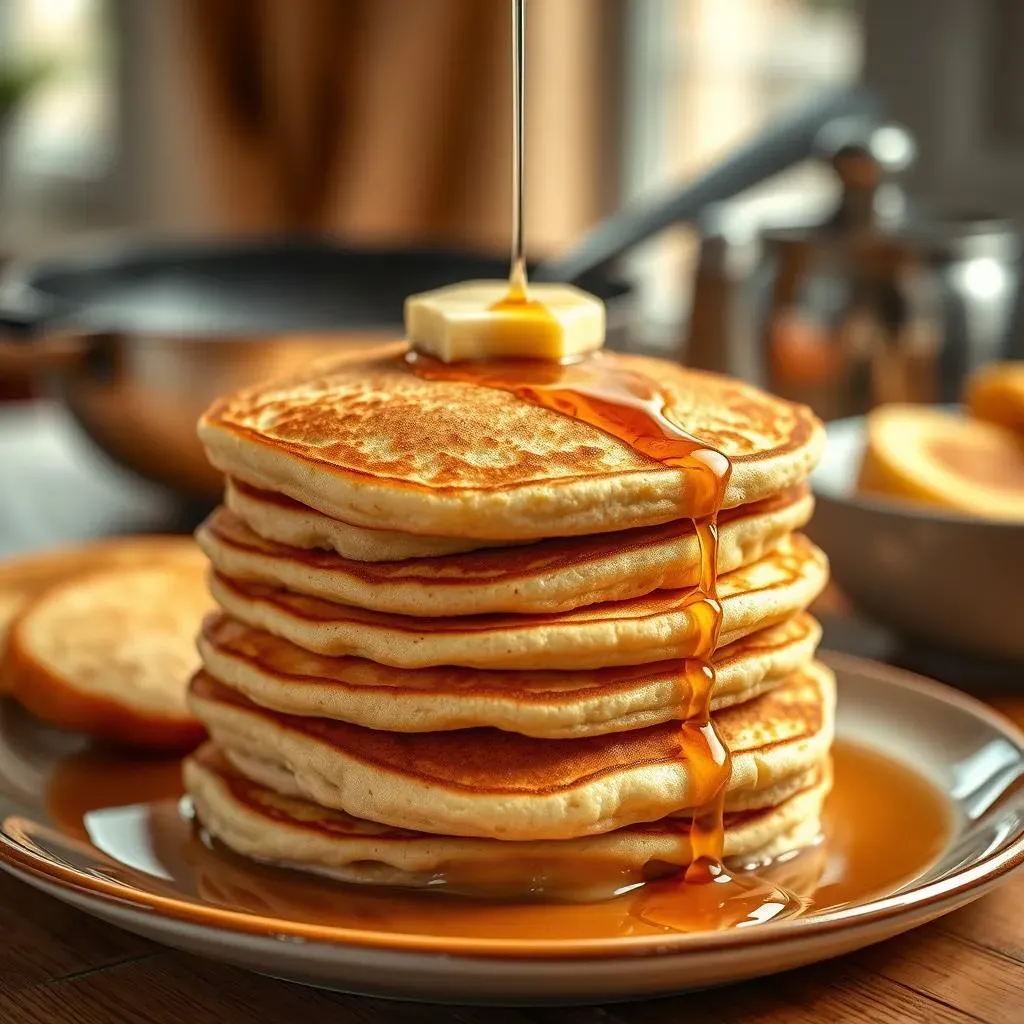Table of Contents
Living with diabetes doesn't mean giving up delicious treats! This article is your guide to creating fluffy, satisfying vegan pancakes that are actually *good* for you. We'll explore the science behind blood sugar and how choosing the right ingredients can make all the difference. You'll learn about the best flours and sweeteners for a diabetic-friendly vegan pancake, and then we’ll dive into a simple, step-by-step recipe. We’ll even share expert tips and tricks to ensure your pancakes are perfectly golden brown and absolutely delicious every single time. Get ready to discover the joy of a guilt-free breakfast with our amazing vegan pancake recipe for diabetics! Forget everything you thought you knew about diabetic-friendly meals – this is about to change your breakfast game.
Understanding Blood Sugar and Vegan Pancakes

Understanding Blood Sugar and Vegan Pancakes
What is Blood Sugar and Why Does it Matter?
Think of your blood sugar as the energy your body uses. After you eat, your body breaks down carbohydrates (like those in pancakes!) into glucose, which enters your bloodstream, raising your blood sugar. Your pancreas then releases insulin, a hormone that helps glucose move from your blood into your cells for energy. If you have diabetes, your body either doesn't make enough insulin or can't use the insulin it makes effectively. This means your blood sugar levels stay high, which can lead to long-term health problems. That's why managing blood sugar is crucial, and choosing the right foods – like carefully crafted vegan pancakes – plays a vital role.
Making smart food choices is key to managing blood sugar. For example, opting for complex carbohydrates (like whole grains) instead of simple carbohydrates (like white flour) can help prevent those nasty blood sugar spikes. A vegan diet can be incredibly beneficial for blood sugar control, as it's often rich in fiber and low in saturated fat, both of which help regulate blood sugar levels. And don't forget the importance of regular exercise – it helps your body use insulin more effectively.
The Glycemic Index (GI) and Your Pancakes
The Glycemic Index (GI) is a ranking system for carbohydrates, indicating how quickly they raise blood sugar levels. Foods with a low GI raise blood sugar slowly, while high-GI foods cause a rapid spike. For people with diabetes, choosing low-GI foods is essential for better blood sugar control. When making vegan pancakes, selecting ingredients with a low GI is key. For instance, using whole-wheat flour instead of white flour significantly lowers the GI of your pancakes.
Here's a simple table comparing the GI of different flours commonly used in pancake recipes: Check out our guide on comparing vegan pancake mixes for more details.
Flour Type | Approximate GI |
|---|---|
White Flour | High (70+) |
Whole Wheat Flour | Medium (50-69) |
Almond Flour | Low (below 50) |
Oat Flour | Medium-Low (around 50) |
Vegan Pancakes: A Deliciously Healthy Choice
Vegan pancakes offer a fantastic opportunity to create a delicious and blood-sugar-friendly breakfast. By using low-GI flours like almond flour or oat flour, you can significantly reduce the impact on your blood sugar levels. Plus, you can add in plenty of nutritious ingredients like berries, nuts, and seeds to boost the nutritional value even further. Think of it as a delicious way to sneak in extra vitamins and minerals!
Remember, portion control is still important. Even the healthiest pancakes can contribute to high blood sugar if you eat too many. Start with a smaller serving and see how your blood sugar responds. You can always have seconds (or thirds!) later if you feel comfortable. And for more tips on making the perfect vegan pancakes, be sure to check out our article on perfect vegan pancakes!
Choosing the Right Ingredients: Flour Power and Sweeteners

Choosing the Right Ingredients: Flour Power and Sweeteners
Flour Power: Choosing the Right Base
The flour you choose is the backbone of your vegan pancakes. Different flours have varying effects on blood sugar, so selecting wisely is key. White flour, with its high glycemic index (GI), should be avoided. Instead, opt for low-GI options like almond flour, oat flour, or whole wheat flour. Almond flour creates light and fluffy pancakes, while oat flour adds a lovely nutty flavor. Whole wheat flour provides a heartier texture and more fiber. Experiment to find your favorite! For a deeper dive into flour choices, check out our vegan pancake mix comparison article.
Consider the nutritional profile too. Almond flour is naturally lower in carbohydrates and higher in healthy fats compared to whole wheat or oat flour. Oat flour, on the other hand, boasts a good amount of soluble fiber which can help regulate blood sugar levels. Whole wheat flour offers a solid balance of fiber and carbohydrates. The best choice for you will depend on your individual dietary needs and preferences.
- Almond Flour: Low carb, high fat
- Oat Flour: Medium carb, high fiber
- Whole Wheat Flour: Medium carb, good fiber
Sweetening the Deal: Low-GI Sweeteners
Sweeteners are a tricky area when it comes to diabetic-friendly recipes. Avoid refined sugars like white sugar, which cause a rapid spike in blood sugar. Instead, use low-GI sweeteners such as maple syrup (in moderation!), stevia, or erythritol. Maple syrup offers a delicious natural sweetness, but remember that a little goes a long way. Stevia is intensely sweet, so use it sparingly. Erythritol is a sugar alcohol that doesn't impact blood sugar significantly. For more ideas on delicious toppings check out our vegan pancake toppings guide.
Experiment with different combinations to achieve your desired level of sweetness. You might find that a blend of sweeteners works best for you. For example, a small amount of maple syrup combined with stevia can provide a balanced sweetness without causing a large blood sugar spike. Remember, moderation is key! Even low-GI sweeteners can contribute to high blood sugar levels if consumed in excess.
Sweetener | Glycemic Index (GI) | Notes |
|---|---|---|
White Sugar | High | Avoid |
Maple Syrup | Medium | Use sparingly |
Stevia | Low | Very sweet, use sparingly |
Erythritol | Low | Sugar alcohol, minimal blood sugar impact |
A Simple, Delicious Vegan Pancake Recipe for Diabetics

A Simple, Delicious Vegan Pancake Recipe for Diabetics
The Recipe: Easy as 1, 2, 3!
This recipe uses oat flour for its fiber content and mild flavor, but feel free to experiment with almond flour or whole wheat flour for different textures and tastes. We're keeping the sweetness subtle, relying on a touch of maple syrup for a hint of natural sweetness. If you prefer a sweeter pancake, you can always add a little more, but remember moderation is key! For a more in-depth look at flour options, check out our vegan pancake mix comparison guide.
You'll need: 1 cup oat flour, 1 tsp baking powder, ½ tsp baking soda, ¼ tsp salt, 1 tbsp maple syrup, 1 tbsp apple cider vinegar, 1 cup plant-based milk (soy, almond, or oat work well), 1 tbsp oil (vegetable or coconut). Mix the dry ingredients in a bowl. In a separate bowl, whisk together the wet ingredients. Gently combine the wet and dry ingredients, mixing just until combined. Don't overmix!
- 1 cup oat flour
- 1 tsp baking powder
- ½ tsp baking soda
- ¼ tsp salt
- 1 tbsp maple syrup
- 1 tbsp apple cider vinegar
- 1 cup plant-based milk
- 1 tbsp oil
Cooking and Serving: Pancake Perfection
Heat a lightly oiled griddle or non-stick pan over medium heat. Pour ¼ cup of batter onto the hot surface for each pancake. Cook for 2-3 minutes per side, or until golden brown and cooked through. Serve immediately with your favorite toppings – fresh berries are always a winner! For more ideas, check out our vegan pancake topping suggestions. Remember, portion control is key! Start with a smaller serving size and monitor your blood sugar levels.
Want to make a big batch for the week? No problem! These pancakes freeze beautifully. Let them cool completely, then store them in a freezer-safe bag or container for up to 3 months. Reheat them in the microwave or toaster oven for a quick and easy breakfast. For detailed instructions on storing and reheating, see our guide on storing vegan pancakes. Enjoy your delicious and healthy vegan pancakes!
Tips and Tricks for Perfect Pancakes, Every Time

Tips and Tricks for Perfect Pancakes, Every Time
The Secret to Fluffy Pancakes
Overmixing is the enemy of fluffy pancakes! Gently fold the wet and dry ingredients together until just combined. Overmixing develops the gluten in the flour, resulting in tough, dense pancakes. Aim for a few lumps in the batter – that's a sign you're doing it right. For more tips on avoiding common mistakes, check out our article on common vegan pancake mistakes.
Let the batter rest for 5-10 minutes before cooking. This allows the gluten to relax and the baking powder to activate, resulting in lighter, fluffier pancakes. Think of it as a little pre-party for your pancake batter – it's all about getting ready for its big moment on the griddle!
- Don't overmix the batter.
- Let the batter rest for 5-10 minutes.
- Use a lightly oiled griddle or pan.
Cooking Like a Pro: Griddle Mastery
Heat your griddle or non-stick pan to medium heat. Don't crank it up too high – you want a gentle sizzle, not a fiery inferno! Too much heat will burn the outside of your pancakes before the inside is cooked through. If you're unsure about the temperature, test it by sprinkling a few drops of water onto the surface. If they sizzle gently and evaporate quickly, you're good to go. For more detailed instructions on achieving pancake perfection, consult our guide on making perfect vegan pancakes.
Cook the pancakes for 2-3 minutes per side, or until golden brown and cooked through. Use a spatula to gently flip them – don't press down too hard, or you'll flatten your fluffy creations! Once cooked, serve immediately. For tips on making pancakes that are perfectly golden brown and cooked through, see our guide on why are my vegan pancakes flat?. They're best enjoyed fresh off the griddle!
Problem | Solution |
|---|---|
Pancakes burning | Reduce heat |
Pancakes sticking | More oil/non-stick pan |
Pancakes too flat | Don't overmix |